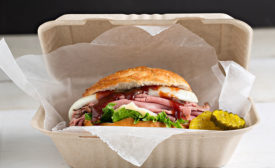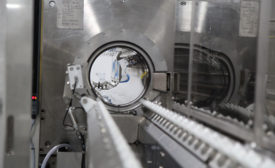Special Reports
Processing Technology
More meat, more problems
The move to larger carcasses may produce more protein, but it also complicates the processing and handling of whole-muscle cuts.
Read More
Special Report
Top 100 meat and poultry processors 2016: Blasting through
A majority of meat and poultry processors cited in our Top 100 Processors Report was able to overcome the challenges of the past year to secure positive outcomes.
Read More
Formulation Strategies
The Lunch Bunch: Sandwiches continue to drive lunch protein trends
Lunchtime sandwiches — as popular as ever — combine unique, creative proteins with traditional and ethnic combinations.
Read More
2016 Food Safety Report
New safety regulations, consumer trends drive packaging
Food packaging manufacturers stay ahead of consumer trends and FSMA regulations with real-time labeling, QR codes and advanced robotics.
Read More
2016 Food Safety Report
How acceptance inspection can improve safety, quality, bottom-line costs
Read More2016 Food Safety Report
Renovation realities: How food safety plays into plant construction/expansion plans
Without a sharp focus on the food-safety tasks required during expansion or remodeling of a processing plant, a company could be setting itself up for failure before operation even begins.
Read More
Stay ahead of the curve. Unlock a dose of cutting-edge insights.
Receive our premium content directly to your inbox.
SIGN-UP TODAYCopyright ©2024. All Rights Reserved BNP Media.
Design, CMS, Hosting & Web Development :: ePublishing













